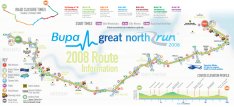Injury Prevention: Injury Prevention
Patellofemoral Pain Syndrome ("Runner's Knee")
Here's how to prevent and treat one of the most common running injuries.
By Shelley Drozd
Forty-two percent of all overuse injuries affect the knee joint, and patellofemoral pain syndrome (PFPS), or simply "runner's knee," is the most common overuse injury among runners. It occurs when a mistracking kneecap (patella) irritates the femoral groove in which it rests on the thighbone (femur). Pinpointing a single cause is difficult, says Stephen Pribut, DPM, a sports podiatrist who specializes in running injuries. It could be a biomechanical problem--the patella may be larger on the outside than it is on the inside, it may sit too high in the femoral groove, or it may dislocate easily. Also, worn cartilage in the knee joint reduces shock absorption, high-arched feet provide less cushioning, and flat feet or knees that turn in or out excessively can pull the patella sideways. There are also muscular causes. Tight hamstring and calf muscles put pressure on the knee, and weak quadriceps muscles can cause the patella to track out of alignment. Just the repetitive force of a normal running stride alone can be enough to provoke an attack. PFPS can affect one or both knees. It strikes mostly younger, recreational runners and twice as many women as men, according to the British Journal of Sports Medicine. (Women tend to have wider hips, resulting in a greater angling of the thighbone to the knee, which puts the kneecap under more stress.) Symptoms include tenderness behind or around the patella, usually toward its center. You may feel pain toward the back of the knee, a sense of cracking or that the knee's giving out. Steps, hills, and uneven terrain can aggravate PFPS.To prevent PFPS, run on softer surfaces, keep mileage increases less than 10 percent per week, and gradually increase hill work in your program. Visit a specialty running shop to make sure you're wearing the proper shoes for your foot type and gait. Also, strengthening your quadriceps will improve patellar tracking, and stretching your hamstrings and calves will prevent overpronation. (Try the exercises below from Pribut.)At the first sign of pain, cut back your mileage. The sooner you lessen the knee's workload, the faster healing begins, says Pribut. Avoid knee-bending activities, canted surfaces, and downward stairs and slopes until the pain subsides. As you rebuild mileage, use a smaller stride on hills. Consider orthotics if new shoes don't fix the problem. "If your feet have good form, your knees will follow," says Pribut. See a doctor if the pain persists, to rule out another condition.
Doctor's Orders Work these moves into your routine to help prevent runner's knee
Doctor's Orders Work these moves into your routine to help prevent runner's knee
Hamstring Stretch: Stand in front of a chair, bench, or high step and place your left heel on it. Keep your back straight and lean forward from the hips until you feel a stretch down the back of the leg. Hold for 30 to 60 seconds, switch sides, and repeat. Perform two or three stretches per leg.

Straight Leg Lifts: Lie down, bend your left knee, and plant your left foot on the ground. Take two to four seconds to raise and lower your right leg (30 to 60 degrees), keeping the knee relatively straight with a slight bend. Do 10 repetitions, switch legs, and repeat the sequence to complete one set. Work up to 10 sets of 10 reps each.









No comments:
Post a Comment